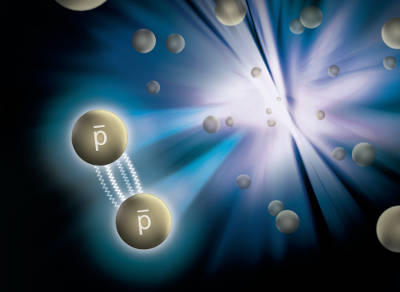Using AI to control energy for indoor agriculture
30 September 2024
Published online 4 November 2015
The first study into the interaction between antiprotons finds a strong attractive force.

© Brookhaven National Laboratory
Scientists have recorded the first measurement of the interaction between two antiprotons, the antimatter equivalent of protons.
In order to produce the antiproton pairs that the scientists can observe, an international consortium of researchers from the STAR Collaboration group used the Relativistic Heavy Ion Collider (RHIC) in Brookhaven, US. The collision that happens when two gold ions strike each other at near light speeds inside the collider produced an abundance of particles, including a large fraction of antiprotons.
After singling out the antimatter through specialized detectors, the scientists then measured the interaction between them. “We do this by studying how antiprotons can come close to each other. After examining a few hundred million collisions, we can extract a measurement of the force between two antiprotons,” says Aihong Tang of the Brookhaven National Laboratory, New York, US, one of the authors of the study published today in Nature1.
They found that the antiprotons had a strong attraction to each other. The scattering length and effective range (parameters that describe elastic collisions) of this interaction was also consistent with that of proton–proton interactions.
“That tells us that the force that makes antimatter stick together is similar to the force that binds matter together,” says Tang. “Our measurement can [also] provide input for describing the interaction among cold-trapped gases of antimatter ions.”
The interactions studied herein represent the workings of the simplest system of antinucleons — essential to physicists who want to understand the structure of more complex antinuclei and their properties, including mass and binding energy.
doi:10.1038/nmiddleeast.2015.206
Stay connected: